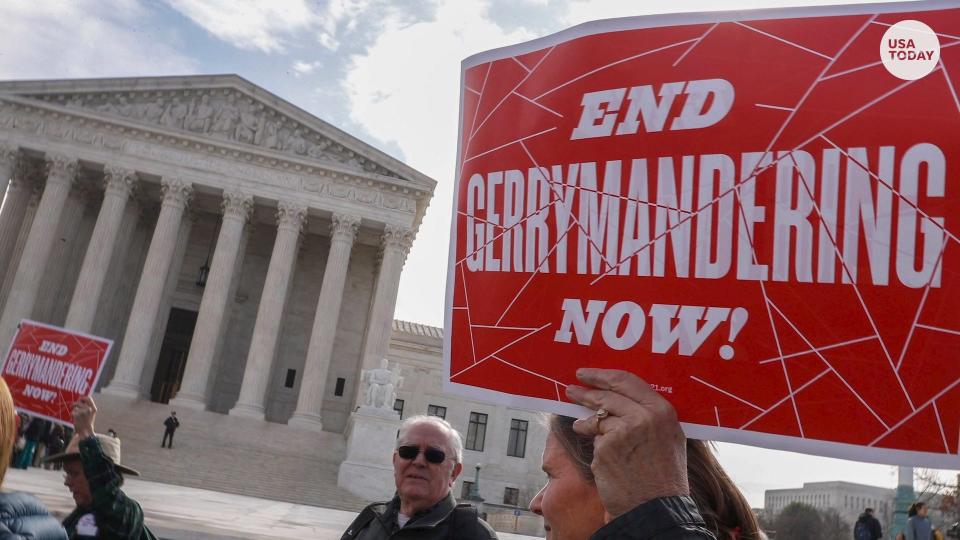How Iowa can teach the nation to cure one form of political cancer: gerrymandering
Iowa has never been particularly effective at tooting its own horn. We Iowans are naturally self-deprecating. I remember back in 1999 when the state held a contest to come up with a new tourism slogan. The entry that made the national newspapers: “Baja Minnesota.”
Maybe that’s why Iowa has never been terribly successful at touting the fact that this state holds the cure to one form of political cancer that has long plagued our country: partisan gerrymandering. It’s time to change that, now that the U.S. Supreme Court has again refused to lift a finger to address an obvious source of dysfunction in our democracy.
Gerrymandering is one way politicians manage to stay in power no matter how ineffective or corrupt they may be. This abuse of political power deserves at least part of the blame for extreme polarization in Congress.
The process is broken
Every 10 years, after the Census, the boundaries of political districts have to be redrawn to account for population changes. In many states, the party in power manipulates the redistricting process to benefit its incumbents and to minimize the minority party’s chances to gain seats.
That hurts everyone, because it contributes to an environment in Washington where otherwise “safe” incumbents fear only a primary challenge. That adds pressure for incumbents to cater to the far-right or far-left fringes of the party and empowers moneyed interest groups pushing extremist agendas.
Democrats and Republicans can agree: Hogan and Schwarzenegger: It's time to 'terminate' gerrymandering
In Wisconsin, Republicans used computer models and voting data after 2010 to redraw district lines for its General Assembly. They were so spectacularly successful that Democrats won only 39 of 99 seats in the 2012 election, even though Democrats won a majority of the votes cast statewide.
Clean-government advocates were hoping the Supreme Court would use this case to offer some guidance for how far race-based or partisan gerrymandering can go to disadvantage minority voters. Instead, the court punted the case back to district court on technical grounds, suggesting this is a problem for states to manage.
How Iowa does redistricting
The good news is that Iowa has managed this problem and has done so extremely well since 1980. That’s when the Iowa Legislature adopted the nonpartisan redistricting process that has been used ever since. The law puts nonpartisan legislative staff in charge of drawing district maps for legislative and congressional districts. The maps, by law, cannot consider partisan factors or the effect on officeholders. The primary consideration is creating districts that are as close to equal in population as possible, while respecting political subdivisions and maintaining a reasonably compact area.
How to maximize party power: Supreme Court ditches fairness, voter rights and the Constitution in gerrymandering ruling
The Legislature must vote the first map up or down within a limited period of time, with only corrective amendments allowed. If the first map is defeated or vetoed by the governor, a second map is prepared that takes into account reasons cited by the Legislature or governor for refusing the first map. The second map also must be voted up or down, with only corrective amendments allowed. If the second map fails, the third proposed map could be amended like any other bill. If no plan is enacted or the plan is successfully challenged in court, the job of redistricting falls to the Iowa Supreme Court.
That has never happened, however. Lawmakers feel significant pressure to avoid this outcome. I watched the process work through the Legislature in 2001 and 2011. In 2001, lawmakers rejected the first map because it would have retired too many lawmakers by pitting about half of the state legislators into races against fellow incumbents. The second map was approved, even though it tossed two incumbent GOP congressmen — Jim Leach and Jim Nussle — into the same district. Leach moved from Davenport to Iowa City to avoid a primary.

In 2011, lawmakers accepted the first map even though it again paired two sets of congressmen – Republicans Tom Latham and Steve King were thrown together, as were Democrats Bruce Braley and David Loebsack. Loebsack moved into the redrawn 2nd district to avoid a primary. Latham moved into the 3rd district, challenged incumbent Democrat Leonard Boswell, and won.
Nonpartisan redistricting tends to function as Iowa’s form of term limits. It helps create open seats, providing opportunity for fresh blood, while gerrymandering does the opposite. It has not prevented single-party dominance in recent years, but it does maintain the minority party’s ability to compete and potentially regain control. That’s healthy for the process, no matter which party you prefer. It keeps both sides accountable to voters. We need more of that in Congress, not less.
As Iowans, we can’t afford to keep this secret to ourselves. We also can’t afford to be complacent. Nonpartisan redistricting tends to benefit the minority party, at least in the short term. There’s always the temptation for a strong majority party — such as today’s GOP-run Legislature and Republican governor — to try to tweak the process to its advantage. Iowans need to impress on lawmakers and candidates that such action would be a roadmap to their retirement from politics.
Kathie Obradovich is the opinion editor for the Des Moines Register, where this column originally appeared. Follow her on Twitter @KObradovich.
You can read diverse opinions from our Board of Contributors and other writers on the Opinion front page, on Twitter @usatodayopinion and in our daily Opinion newsletter. To respond to a column, submit a comment to letters@usatoday.com.
This article originally appeared on Des Moines Register: Gerrymandering: Iowa's redistricting process can save the nation

